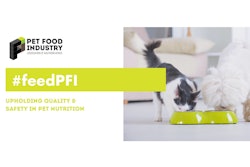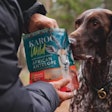
While giraffes, rhinos, lions and other iconic wildlife framed by Nairobi’s skyline may spring to mind when one thinks of Kenya, the East African nation is also home to dogs, cats and other companion animals. In fact, United States Department of Agriculture’s (USDA) Foreign Agricultural Service analysts ranked pet food among the top opportunities for U.S. companies looking to export goods to Kenya. As in much of the world, dog and cat food are the core of the Kenyan pet food industry.
In 2022, Kenya’s dog and cat food market reached 2,568 metric tons. Pet food imported to Kenya had a value of US$3.7million, up from approximately US$960,000 in 2010. Dog and cat food imports grew at an annual rate of 6.7% from 2018 to 2011. This growth follows an overall pet food market growth rate of 27% from 2006 to 2010. However, the Kenyan government does place a 35% import tariff on dog and cat food. Kenya has potential as an export market for U.S. pet food makers, but competition from Turkey, Germany, Belgium, South Africa and Spain may pose a challenge. Nevertheless, USDA analysts believe Kenya’s pet food market has good growth potential for U.S. brands.
Pet ownership in Kenyan
A 2022 survey of Kenyans by TGM Research found that 54% of respondents owned at least one pet. Cats were the most frequently kept pets in Kenya with 68% of pet owners owning them. Dogs chased cats at 63%. However, ownership of other pets was much lower. Four percent of survey participants had pet fish, while 8% kept pet rabbits. Only 2% reported owning pet parrots and 1% kept turtles as pets.
Supermarkets were the main source of Kenyan pets’ food at 42%. Of TGM Research survey respondents, 15% bought pet food in pet specialty retail outlets. Another 7% bought pet food online. The most frequently used pet food was homemade though, followed by the brands Reflex and Royal Canin.

















